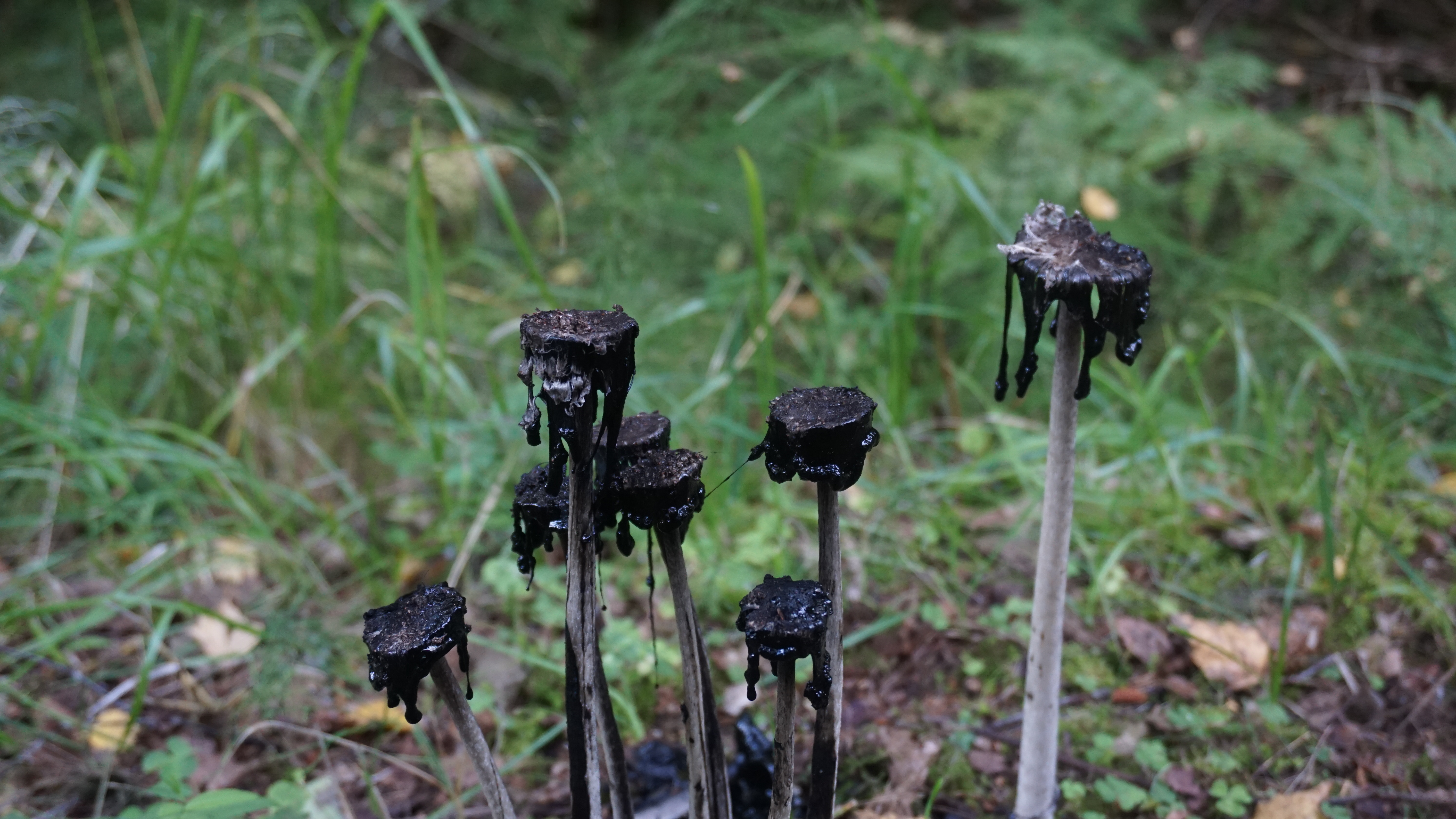The ubiquity of mushrooms around Estonian forests is a yearly autumn phenomenon. These fungi, from the cute ones, and dull ones, to the funky ones, are easily spotted along major hiking sites like the Puhajarv trails. Admittedly, these mushrooms were the very reason I trailed behind my hikemates, while I purposely watched some families doing mushroom picking. I am no mycology expert but enoughly aware that certain species are toxic and deadly, thus, was practically careful to not even touch them. Good thing, taking pictures is very much allowed, making this dump right here very much possible. Props to the mushroom identifier app, these shrooms have their names (plus some cool stuff!).
Fly Agaric. As one of the more pleasing to the eyes, this mushroom is often collected for rituals, largely found as the illustration for several European fairy tales and Christmas traditions, gaining a solid place in pop culture. Though, it mostly reminds me of the good old Mario Brothers days, being the inspiration for the creation of the super mushroom power-up. Generally considered poisonous, this species is also known for its hallucinogenic properties due to neurotoxins, ibotenic acid and muscimol, which likewise reminds me of a forgettable Grey's Anatomy episode, probably no one even remembers.
Shaggy scalycap. The bitter Pholiota squarrosa is most commonly found in clusters underneath old deciduous broadleaf trees and stumps, characterized by scales in its cap as the name suggests. Some claim that this is edible and that its bitterness could be easily masked with some soaking and boiling techniques. We'll never know, some mushrooms could be like some humans; in which toxicity and bitterness are inherent sometimes. And some boiling or masking methods could be remedy enough.
Devil’s Snuffbox. Commonly found in small groups in forest floors,
this species is edible when young when its gleba is still white & homogenous but is considered toxic later upon maturity. The younger
version resembles the lethal Deathcap, so choose your poison wisely. Other than that, probably the more intersting part of this mushroom narrative is its lycoperdic acid content, a glutamate analog with relatively unexplored pharmacological studies making it a potentially good subject for scientific works in natural products.
Pocket-Stalked
Russula. This medium-sized brown-capped member of the Russula genus grows both
in wet and arid areas, associated with various trees as pines, oaks, and
spruce. It gives off a waxy benzaldehydic odor, thus, not edible in general. But it's not dangerous either as there are no known fatally toxic Russulas in Europe. One technique I learned to determine the edibility of mushrooms in this family is putting a portion of the mushroom flesh on the tongue. The edible ones give no violent taste while the toxic groups could cause a burning sensation.
Pear-Shaped
Puffball. The mushrooms of this species are in clusters, attached to fallen
trees and stumps via mycelia. It's saprobic which means that it plays an essential role in the ecosystem breaking down tough woods for nutrients to return back to the soil. So, cheers to these shrooms for their heavy contribution by doing their own little ways that help in maintaining the balance and sustain harmonious relationships among organisms. If only humans could draw some inspiration from these, what a wonderful world we'll be having.
Shaggy mane. As a heavy metal bioaccumulator, this species should not be eaten. But among all the other mushrooms listed here, this one is my favorite not only because it's pretty and pure on the outside (originally neat & white) but also because it has a tear-jerking story to tell; too dramatic it makes me cringe. During its deliquescence (a natural mechanism for spore dispersal), it releases a black liquid that seems to melt its entire cap until only the stem remains to ensure future reproduction. I guess some humans are capable of such, self-destructive sometimes, especially for the ones they love.
















